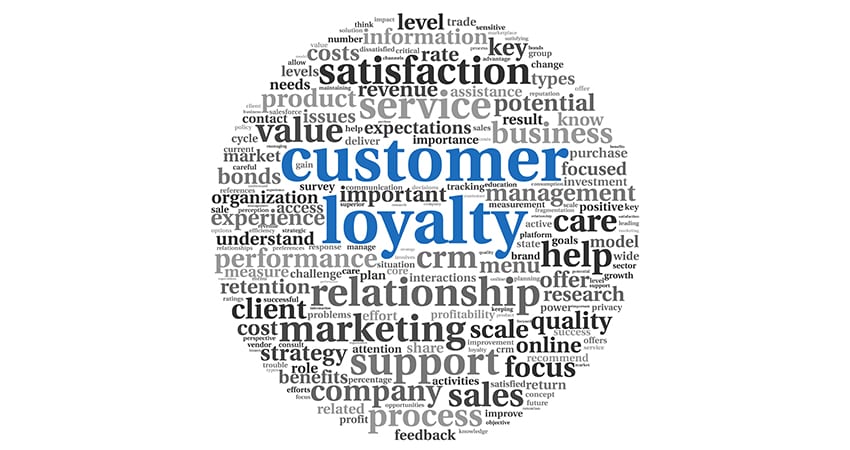We all make assumptions now and then. But making assumptions related to your loyalty program could hurt everything from customer engagement to ROI. To keep your program performance on track, be sure you’re not making these common (and misleading) assumptions.
Assuming Customers Only Want Promotional Emails
It’s tempting to think that customers only want to hear from you when you’re giving them a reward, a percentage off or a special deal for being in your loyalty program. Especially when your data shows that emails with offers earn higher open rates and drive sales. Why else would customers want to hear from you?
But these days, 7 out of 10 consumers prefer to learn about a product through articles, not ads. Think of it this way: Who would you rather listen to when making a purchase? Someone with a sign jumping up and down on the street corner yelling, “Buy me, buy me!” Or a friend who always steers you in the right direction with the latest tips and information?
That’s the beauty of value-add content, or content marketing. Instead of shouting at customers, you can have an ongoing conversation with them. And when you offer them useful bits of information instead of the same old promotions, your brand benefits. That’s because this strategy:
- Establishes you as an expert. Your name will be top of mind when making a purchasing decision, which today involves detailed online research.
- Drives engagement with customers. Gone are the days of blind brand loyalty. Today’s consumers understand their purchases act like a vote to keep you in business — or not.
- Attracts customers who have a real interest in your brand. Unlike price-driven shoppers who come in just for the discount, loyal customers buy more — and more often — making them much more profitable targets.
Best of all, content is one of the least expensive marketing channels out there. Once the content is created, you can share it across social media, email and your website to get more bang for your marketing buck. It’s a powerful tool that shouldn’t be underestimated.
Assuming You Don’t Need a Periodic Communications Audit
Effective communication is at the core of a successful loyalty program. After all, why would customers come back if they don’t understand the value and purpose of your brand and loyalty program? And how can you, the loyalty marketer, be sure your communication efforts are reaching their maximum potential if you don’t periodically check?
That word “periodically” is critical. Auditing your communications just once isn’t good enough. A routine comprehensive audit, in which you collect and evaluate every piece of communication that mentions your business and programs, is the key to consistent and effective messaging at every level. It can help you:
- Maintain understanding of the program among employees, customers and members.
- Identify missed opportunities to promote the program and/or capture customer information.
- Ensure correct, homogenous messaging across all touchpoints — from in-store signage, brochures and associate dialogue to social media accounts, online shopping channels, your member portal and more.
- Reevaluate whether you are taking full advantage of data to target your messaging to specific segments.
- Ensure prospective members have clear and easy access to program information and registration.
- Ensure current members have clear and easy access to their profiles, rewards balances, benefit details and customer service contacts.
“Audit” may sound like an intimidating word, but it doesn’t have to be a scary process. And once you get in the habit, you’ll undoubtedly create a routine that will make each one easier and more efficient. Plus, it’ll keep you in touch with your members and your program performance, giving you the chance to regularly adjust as needed to optimize your communications.
Assuming Passive Participation Is Okay
Does your loyalty program welcome an influx of new members every month and have a low attrition rate? Sounds like a success! In reality, that scenario could be hiding problems in the shape of passive participation.
No matter how many members your program boasts, if too many of them are “passive participants,” you can’t call it a success. Passive participants are those who enroll in the program and then seemingly disappear. Or perhaps they make a purchase or two after joining but have no idea how close they are to a reward or what is required to earn one.
Assuming passive participation in your loyalty program is okay does nothing to help achieve your goals. Worse, it can drain resources and weaken your case when arguing the value of the program to skeptical executives.
So how can you encourage more participation in this sedentary group? Consider these strategies, which can improve member engagement:
- Keep it simple. Reduce the fine print and consider changing from a point-based to a dollar-based structure to increase program understanding. If the rewards structure appears confusing or time-consuming, customers are less likely to participate.
- Give them stronger incentives. Add new, more engaging benefits that resonate with customers. Test adding a tier for the top 5% of members, providing additional rewards to your best customers.
- Stay in touch. Enhance member understanding with consistent, monthly email communications and reward status updates. Improve in-store signage and be sure employees are well trained to explain and promote the program face-to-face.
- Bring multi-tender and credit card programs under one overall structure.
If your loyalty program is suffering from a lack of active participation, it’s time to consider a refresh. Trying the tactics above could help shift passive members into active advocates — and boost your program’s performance all around.
Avoid the Risk
Assumptions can be risky in real life and in your loyalty program. By avoiding the ones above, you’ll be well on your way to a stronger program that works harder and more effectively to meet your goals and please your members.
Sandra Gudat is President and CEO of Customer Communications Group
